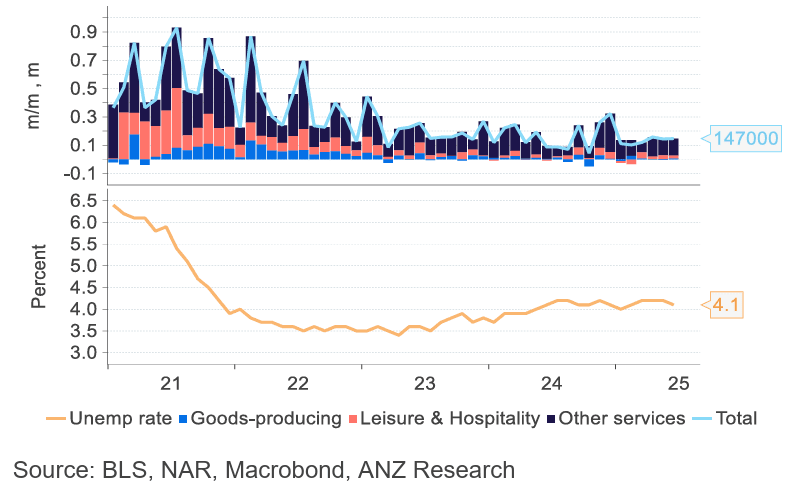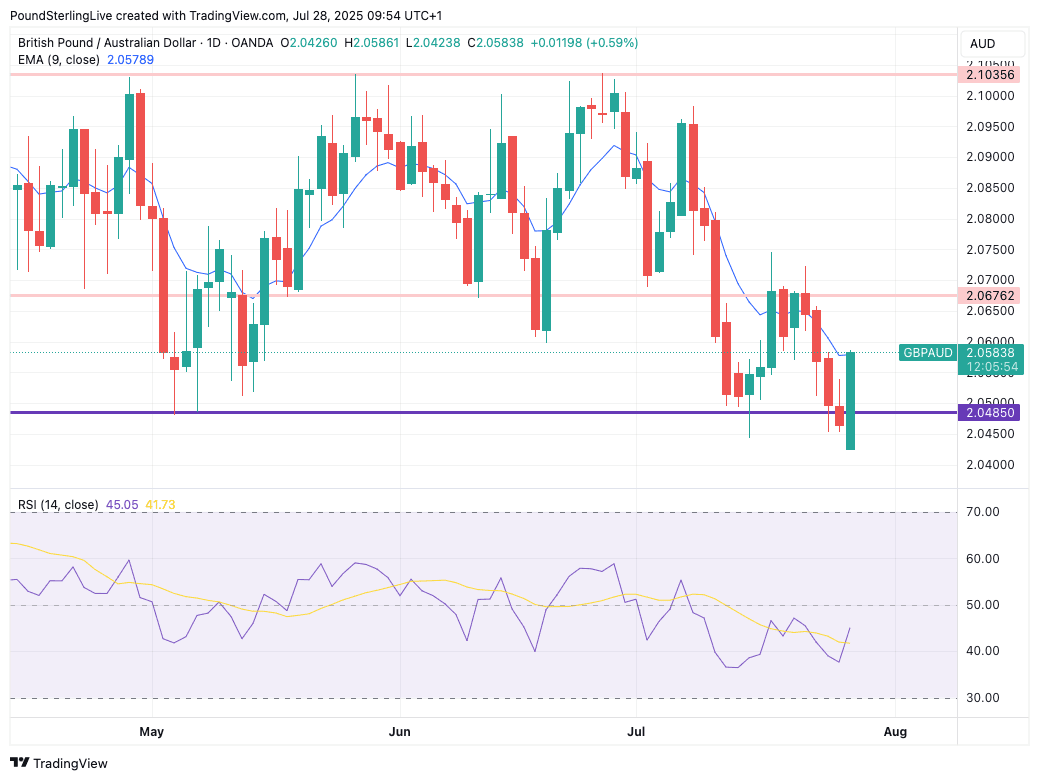
Image © Adobe Images
Pound snaps back on Monday.
The Pound to Australian Dollar exchange rate (GBP/AUD) is putting in an unexpected show of strength on Monday, which suggests it is stabilising.
Sterling is up against most of its G10 peers, apart from the U.S. Dollar, as one of July's biggest laggards looks to recover some lost ground.
For now gains look to be more of a technicality more than anything, owing to the GBP's oversold conditions, particularly against the Australian Dollar, which should continue to benefit from ongoing fading global trade war fears.
Indeed, given news of an EU-U.S. trade accord being reached on Sunday, we would have expected a stronger showing by the Aussie Dollar, which is particularly leveraged to global trade sentiment.
That GBP/AUD is rising by more than half a per cent at the time of writing, having reached 2.0566, confirms markets don't always behave as expected.
Heading into the new week GBP/AUD was looking a little oversold, having diverged from its nine-day exponential moving average (at 2.0576) recently. The nine-day EMA tends to act as a short-term magnet, which opened up some space for a short-term rebound, which is underway.
This means that for now, strength should remain short-lived and technical in nature and that we should eventually see GBP/AUD grind down to fresh multi-month lows.
To negate this view, we would need to see a break above the nine-day EMA in the coming days, as this would turn us more constructive. If this does happen, then GBP/AUD could hold above the broader horizontal graphical support line at 2.0485 for a while longer, and even make a run for 2.1035.
That being said, the bigger picture looks to favour the Aussie at this juncture: the rapidly fading prospects of a trade war remove a lingering uncertainty for the Aussie, which is highly leveraged to broader sentiment.
A trade war would have been particularly bad news for U.S. consumers who would face rising prices and domestic uncertainty, which would have weighed on markets and investor sentiment. This sentiment channel is what impacts AUD, as opposed to any direct export implications for Australia itself.
That's not to say there won't be any impact at all from rising U.S. import tariffs; most economists think this will show up in the data of coming months.
With this in mind, we watch Friday's U.S. non-farm payroll jobs report with interest. The target is 102K jobs, and anything on either side will impact the market. U.S. labour market data has a habit of beating expectations.

Image courtesy of ANZ.
The impact on currencies should be relatively short lived as markets have come to the conclusion that the Federal Reserve is on track to cut interest rates at least on one occassion before year end. Such a development is supportive of markets, and by extension, the AUD.
In Australia this week, Q2 inflation data should garner some interest when released on Wednesday. Here, the expectation is for a print of 0.8% quarter-on-quarter, taking the annual figure to 2.2%.
This is above the RBA's 2.0% target, but the inflationary impulse is fading, which should allow the RBA to cut interest rates again sooner rather than later.
Should the data beat expectations, then that view could be questioned, which would allow AUD to pop higher.

